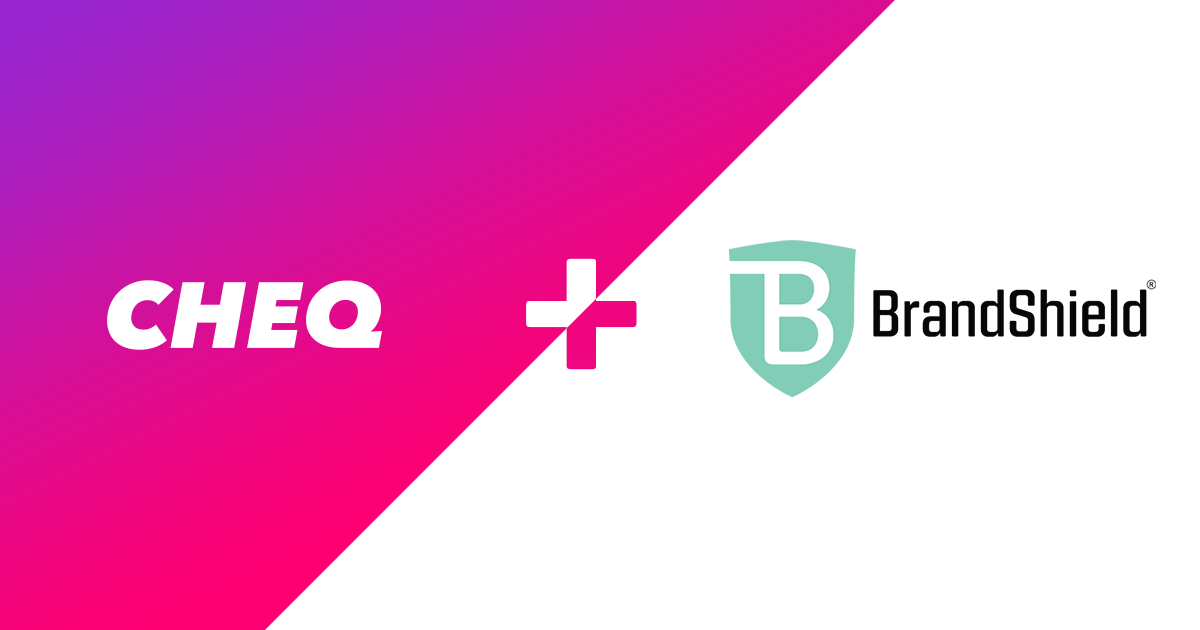Guest Post: Brand Protection on Social Media
Yoav Keren
|Website Ops & Security | November 10, 2021

BrandShield (LSE: BRSD) is a leading cybersecurity company protecting the world’s largest brands and consumers from online fraud, counterfeit sales, social media impersonation and more. Through its AI/ML platform, BrandShield identifies, tracks, and eliminates online threats for global brands and organizations.
It’s no secret that building a successful business is hard work that requires a lot of time and effort. So, as a brand owner, you’ve undoubtedly invested time, effort, and other resources into building your products or services and your customer base. This, combined with your name, logos, and trademarks forms the foundations of your brand.
Your brand, in turn, is what your customers identify with and how they identify your business or refer your products or services to others. In simple terms, your brand forms the cornerstone of your reputation and how you grow your business over time.
The problem is, however, that, as your reputation and business grow, your brand becomes more valuable. As a result, counterfeiters have much to gain and profit by selling counterfeit products. Likewise, vendors can capitalize on your reputation by offering grey products for sale and scammers are increasingly motivated to exploit your brand for their gain.
These all have the potential to damage your reputation and dilute your brand which could, ultimately, lead to a loss of revenue. It’s therefore understandable why implementing the right brand protection strategies is crucial for any business with a strong brand. Here, social media presents a major challenge mainly because of the ease of spreading information on it, but also due to the sheer number of users on various social media platforms.
Quite simply, these platforms make it easy to spread misinformation and scam unsuspecting buyers. In turn, these buyers can, when buying a product under the misapprehension that it’s yours, just as easily damage your reputation if they end up unhappy about their purchase.
In this article, we’ll look at the major infringements on social media and what you, as a brand owner, can do to protect your brand.
The Challenge with Social Media
While social media can be a great way for you to create awareness around your brand, it can, as mentioned earlier, make it challenging to protect it. This is simply a result of the ease with which information is spread on these platforms. For any scammer, vendor, or counterfeiter, it’s as easy as clicking a button and making false information available to thousands, if not millions of people.
To understand the extent of the problem, it’s necessary to look at the usage statistics for various popular social media platforms. As of April 2021:
- Facebook had about 2.7 billion active users.
- Instagram had about 1.3 billion active users.
- TikTok had about 730 million active users.
- Pinterest had about 450 million active users.
- Twitter had about 400 million active users.
Considering these figures, it’s easy to see how bad actors can easily profit from selling counterfeit or grey products in a relatively short period of time. What makes it even easier, is that these platforms often make it simple to find users with specific interests. As such, it’s easier to find users who are more likely to buy a product.
Major Infringements on Social Media
With that in mind, let’s look at some of the major infringements on social media that can have a devastating effect on your brand.
Brand Impersonation
Brand impersonation is a massive problem on social media, especially when you consider that some estimates are that 25% to 35% of all Facebook accounts are fake. In fact, Facebook alone removed about 2.8 million fake accounts globally.
This is possible because social media platforms typically have extremely low barriers to entry. As such, they typically don’t require any form of identity verification, and basically anyone with an internet connection and an email address can open an account. While this makes it easy for users to use the platform, it also makes it easier for cybercriminals to create fake accounts that impersonate a brand.
When they do this, they’ll often do everything possible to make the account seem legitimate and pass it off as the official account of the brand. This includes everything from using official branding and imagery copied from the official account’s social media accounts to using messaging, slogans, and hashtags associated with the brand.
In some cases, they’ll even take part in conversations and comment on the real brand’s posts, often answering customer questions and giving advice. Keep in mind, though, that how they operate will often depend on the specific social media platform.
So, for example, on platforms like Twitter or Instagram, they may create an account that impersonates the official account. On a platform like Facebook, they’ll impersonate the real account through pages or in groups or profiles.
The problem with this, irrespective of the strategy the impersonators use, is that social media platforms are typically based on instant gratification where users want to consume the content as quickly as possible. Because of this, users are simply not able to distinguish between real and fake accounts.
Here, a bigger problem emerges because social media has a significant impact on the way people shop. In fact, according to an ODM Group study, 74% of consumers use social media to make buying decisions. Also, a report from analytics company Aimia indicates that 31% of online shoppers use social media to look for new items to buy.
As a result, brand impersonation can have a significant impact on any company’s bottom line.
Brand Employees’ Impersonation
Similar to impersonating a brand, scammers may often turn to impersonating brand executives or employees. This is often most prevalent through platforms like LinkedIn. Apart from this, it’s also common for them to impersonate the customer service or support teams of an official account.
In these cases, they’ll often use messaging and information in their posts that add credibility to their posts. In this way, they’re then able to pass off the products they sell as the real products of the brand. This then, ultimately, has the potential to damage the reputation of the brand.
Similar to brand impersonation in general, users don’t take the time to verify the authenticity of posts which, in turn, makes them easier to target.
Counterfeit and Grey Products
When presented with a cheap imitation of a product, the lack of quality is often immediately apparent. Sure, in some cases, it’s difficult to distinguish between real and fake, but in most cases, people won’t buy knock-off merchandise in the real world.
On social media, the situation is a bit more complicated. Here, it’s easy for criminals to sell counterfeit goods by using official product imagery, and users simply won’t know they bought a fake product until they receive it. In most cases, once they receive the product, it’s also too late for any recourse.
Unfortunately, many shoppers believe that it’s the brand’s responsibility to remove counterfeits before they’re sold, but this isn’t always possible. So, this has the potential to affect customer loyalty and harm a brand’s reputation, which, in turn, could lead to a loss of revenue.
And the sale of counterfeit goods is a massive problem, especially considering that about 40% of branded products sold online are fake. For example, according to Ghost Data, there are over 160 merchants on Instagram alone selling counterfeit Apple merchandise.
Grey market products and parallel imports are another significant challenge for brands and manufacturers. These products, although genuine, are sold through unauthorized channels. Because these products aren’t officially tracked, it’s challenging to estimate the size of the market and the extent of the problem.
Despite this challenge, the sale of these products creates serious issues for brands. For one, because these products aren’t sold through official sales channels, they don’t carry warranties and don’t have official support. Also, these products often don’t meet the regulatory standards for a specific country or jurisdiction.
Lastly, vendors generally sell grey market products or parallel imports at prices far lower than the official product. This could create the perception that the official product is overpriced and can have severe consequences that sell the official product.
No matter what issue you look at, the sale of these products can affect the perception of your brand and damage your reputation.
Linking to Unauthorized Sales
Although the products above can be effectively sold through social media platforms, it’s certainly also possible and common that they’re sold through external websites or platforms. In this case, scammers will link to these external sites from social media platforms to sell these products to unsuspecting users.
As is the case with brand impersonation, scammers will do everything possible to make these links appear official when they’re not. As a result, users who don’t take the time to verify the authenticity of these links will be more likely to buy these products.
Consequently, because these products are counterfeit, grey, or parallel import, it can damage your reputation.
Facing These Challenges Head On
Considering the above infringements and the effects they could have on your brand, it’s easy to see why you need to implement the right strategies to combat them. Your first step to protect your brand would be to register your intellectual property. Here, it’s also important to register your intellectual property not only locally but also abroad, especially if you sell to a global audience.
Although taking this first step can go a long way in making protecting your brand easier, it’s crucial to understand that this step alone will not prevent it. It will, however, make it simpler to remove infringing accounts and posts when you discover them. So, ultimately, you need other tools and strategies that will help you take a more proactive approach to brand protection.
Monitoring
Considering the sheer number of users on social media and the vast number of posts, it’s simply impossible that you’ll find infringing posts and accounts easily. For example, according to analytics firm Ghost Data, Instagram alone may have as many as 95 million bots posing as legitimate accounts. Also, it estimates that about 20% of posts about top fashion brands featured counterfeit content products.
As a result, you need a monitoring tool that detects and identifies cases of trademark infringement, brand impersonation, counterfeit sales, or other cases of brand abuse. Here, the ideal platform will alert you and give you all the information you need about possible infringements that could damage your reputation, irrespective of whether these infringements are found on pages, in groups, posts, or in advertisements.
By using a platform like this, you’ll be able to consistently monitor several social media platforms, which, in turn, helps you take a proactive approach to brand protection.
Respond Quickly
Monitoring is only one part of the equation, though. The other crucial part is enforcement. Think of it like this – it’s of little use if you monitor several social media platforms but don’t do anything to remove the infringing posts or accounts.
So, ultimately, when you become aware of an infringing account or post, you need to take immediate action to remove it. One way to do this is by using the built-in reporting tools all major social platforms have. These tools allow you to request the platforms to remove infringing posts and accounts and they’re often the best tools to use.
A bonus with these reporting tools is that if you make the reports you submit as accurate as possible, you’ll start to build trust with the platform. As a result, once you’re seen as a credible source of reports, your takedown requests will be processed quicker and more consistently.
Another option would be to send cease and desist letters to the offending account holders when you discover them. This will, in all probability, lead to the removal of the infringing posts fairly quickly. If not, you’ll be able to take further enforcement steps.
The Right Relationships
Apart from your monitoring and enforcement processes mentioned above, it’s also important that you build and maintain excellent relationships with strategic employees at the major social media platforms. As mentioned, a perfect way to start building these relationships is by using the reporting tools on these platforms to make 100% accurate reports.
In addition, you could also consider becoming a brand partner on social media platforms that will make it easier for you to use your power and influence which makes it easier to enforce your rights.
Finally, another option is to go through the verification process on the platform that will show your customers that your account is authentic. This is, for example, indicated with a blue tick on a platform like Twitter, while Facebook allows you to become a Business Partner which is confirmed by a Business Partner badge on your page. This, in turn, shows that you meet the highest standards in service and quality.
Think Creatively and Enforce Creatively
In addition to the above strategies that will help you to proactively protect your brand, there are also some creative ways in which you can do this.
You could, for instance, create awareness among your customers through your official channels about the danger and prevalence of brand impersonation, counterfeit goods, and other scams. You could even consider providing your customers with the necessary reporting tools to report any infringements.
In this way, you’ll equip and empower your customers to identify possible infringements and report them to you. As a result, you might be able to pick up on these infringements in cases where you, with the tools you use, might miss them.
Another option is to create undercover social media profiles. So, just like it’s easy for criminals and scammers to create social media accounts, it’s just as easy for you to create accounts to infiltrate groups where counterfeit goods are commonly sold. In this way, you can use the anonymity provided by social media against these scammers or sellers and use it as a valuable tool to protect your brand.
The Bottom Line
With its sheer number of users and the wealth of opportunities it creates for you as a brand owner, social media can be a very effective tool to market your business, products, or services.
Unfortunately, social media also has a dark side where the sale of counterfeit goods, brand impersonation, and other infringements can have a devastating effect on your reputation and your bottom line.
As a result, it’s vital that you implement the right strategies to combat and prevent these infringements before they spiral out of control.
Get in touch to get your heatmap set up and get your free CHEQ for PPC trial today.
P.S.
Want to protect your sites and ads? Click here to Request a Demo.











